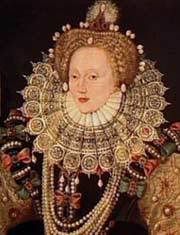Last time on this blog I talked about what I am hoped to see in a contest first three chapters. This time I promised to talk about the dreaded synopsis.
I am not at all surprised by the terror many people show when the S word is mentioned. I still struggle with them, even though I have five books published and now write my stories only on proposal i.e. all my editor sees before she buys a book, is a synopsis. So I guess they had better be good enough for her to want to buy the book. I think one of the most important bits of help I ever received was from my editor. She asked “What is keeping them apart?”

Most stories have a plot or they wouldn’t be a story. Writers of romance novels have a much harder time than a writer of mystery for example. You have to write two plots. The story plot and the romance plot. And for each of those stories, there has to be tension and conflict and resolution.
What I often see in synopses I judge, is the romance taking second place to the story plot. It is mentioned here and there, they start liking each other, they go to bed, it all ends happily ever after when they realize they should be together.
If you want to catch an editor’s eye, the romance plot has to drive the story. Why they can’t be together needs to drive why they take certain steps and actions as they move through the external plot.
I have a published friend who can make me cry when I read her black moment and her
I usually try to wind up my story plot, the solving of the crime, the identification of the bad guy, the achieving of the goal and have it actually be the worst moment in the relationship. They solve the problem and all is lost. Then you have to bring them back together in their romance plot.
One way to see how you are doing with balance between plot and romance plot, is to highlight your synopsis. Blue for everything related to the external plot, pink for everything to do with the romantic plot. Be honest now! In a five page synopsis one would expect to see very little in pink among the blue at the beginning, the initial denied attraction, maybe, then a kiss, and some more denial. Around page 3 pink and blue should be about even, working together, still aware that it can’t be, but being swept up in a relationship that they are fighting, with the reasons they are fighting it and what the dire consequences are if they give in. Meanwhile, they are dealing with their external events. Around the middle/end of page four you might see the end of blue altogether and the rest of the synopsis is all pink, the black moment of why they can never be together and the resolution. Of course the external plot can go right to the end, but the relationship has to be there with it.
If you counted up the lines there might be more pink than blue, or maybe the same amount, but if you have a lot more blue than pink you may not have a romance synopsis. I am not saying you haven’t written a romance. I am saying you haven’t presented it that way in your synopsis, the only thing the editor will read, apart from your first three chapters, - where you are still getting going with your external plot.
Other things you should consider when writing a synopsis.
Start with a hook that ties to your character’s inner conflicts. Here are the first lines from my first two synopses for Harlequin.
- A play-it-by-the-rules nobleman, Christopher Evernden inherits his uncle’s Courtesan.
- Down-on-her-luck, Lady Eleanor Hadley takes to the High Toby where the one man who can ruin her steals a kiss.
Try to mention as few characters as possible. The hero, the heroine and the bad guy if there is one (or what ever they are struggling to overcome in the external plot). Too much detail takes away from the romance, which is tea for two, not a garden party.
Hit only the main high points of your external plot. You can leave out huge swaths of detail as long as you can show the points of conflict between your couple. Be specific. Write in the present tense. Make sure you keep it as short as you can.
Good luck. As a special prize, I will throw the names of the commenters’ who express interest into a hat – to win feedback on your synopsis to be sent to me within two weeks of this blog.
 Ann Lethbridge’s book Wicked Rake, Defiant Mistress is available for preorder at
Ann Lethbridge’s book Wicked Rake, Defiant Mistress is available for preorder at e-Harlequin
It will be in stores on May 1.
 Also coming May 1, the related Undone short story available on e-harlequin on May 1 The Laird and the Wanton Widow
Also coming May 1, the related Undone short story available on e-harlequin on May 1 The Laird and the Wanton Widow






















